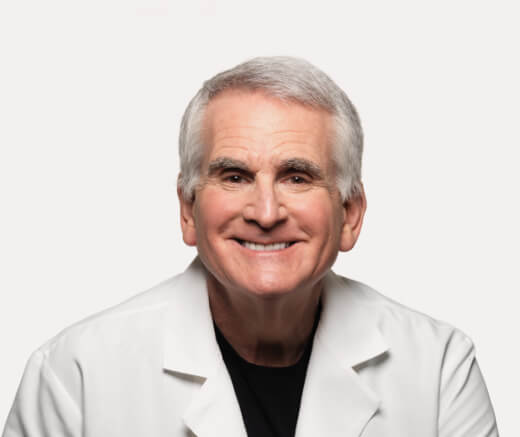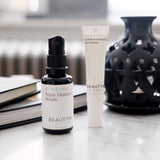Brown spots and blotches are the most common skin discoloration. But in order to treat the brown spots on your skin, you need to know which type you have.
Brown spots on the skin are caused by an excess production of melanin due to some type of injury to the skin. Browns spot can be caused by a cooking burn, a scratch, a pimple, or even a sunburn. Thankfully, these types of brown spots on the skin are easy to treat.
Another type of brown spot on the skin are simply caused by age. These brown spots are easily treated as well. For example, exfoliating eye cream can help reduce brown spots around the eyes.
The only difficult brown spots to treat are the blotchy irregular brown patches called melisma, or chloasma, caused by hormonal changes in the skin, such as during pregnancy.
In this video, Dr. Schultz discusses all of the different types of brown spots.
Video Transcription
Brown spots and blotches on the face are the most common facial discoloration and they can occur anywhere on your skin. There are many different types, and most are easy to fix, however some prove to be challenging to improve and others even defy many treatments. What about yours? Stay tuned! No matter what your ancestry or racial background, virtually everyone is susceptible to varying degrees of tan or brown discoloration anywhere and everywhere on their skin.
What are the different types of brown spots?
A previous DermTV episode discussed age spots, also called sun or liver spots, but today I'll put into perspective the entire spectrum of brown discoloration. And to simplify it, I'm not talking about moles or beauty marks today. In short, all brown discolorations are caused by your pigment cells, called melanocyes, making too much of your normal brown pigment, which is called melanin. Those cells normally make melanin all the time and that melanin is one of four pigments that are responsible for determining your normal skin color. But when the melanocytes make too much melainin, you get brown discoloration. And the reason that happens is usually in response to some type of an injury to the skin. When the brown discoloration is in response to an acute injury like a cooking burn, a scratch, a pimple, a picked pimple, or a sunburn, it's called post inflammatory hyperpigmentation, or PIH for short. Post means after. Inflammatory means inflammation, which occurs as a response to all injuries, and hyperpigmentation means too much melanin pigment which of course is brown. So with most of these injuries the area that darkens or turns brown is the same area that was injured...round spots from pimples, linear areas from burns from the edge of a pan or pot or the shape of the scratch, and of course your tan after a sunburn occurs everywhere you were sun burned. This type of PIH is easy to treat. Age or sun spots which come very gradually over years and are round but often with irregular borders, are also from a skin injury but in this case it's chronic and repeated UV injury over many years. It's the same bad UV rays that cause premature aging and skin cancer. These spots are easy to treat. The last brown discoloration occurs in women and is blotchy irregular tan and brown patches that most often occurs on the forhead, cheeks, upper lip and chin. It's called melasma, or chloasma, but if you're pregnant then it's called the mask of pregnancy. This discoloration is very tough to treat.
Skin injuries cause brown spots
The bottom line is, if you have brown discoloration, as you can now see, it's usually as a result of skin injuries. And now that you know the types, check out the DermTV episodes on each to learn about treatment. One thing is for certain though: sunscreen will help the treatment of every single one.
 BRX REWARDS
BRX REWARDS




















Leave a Comment